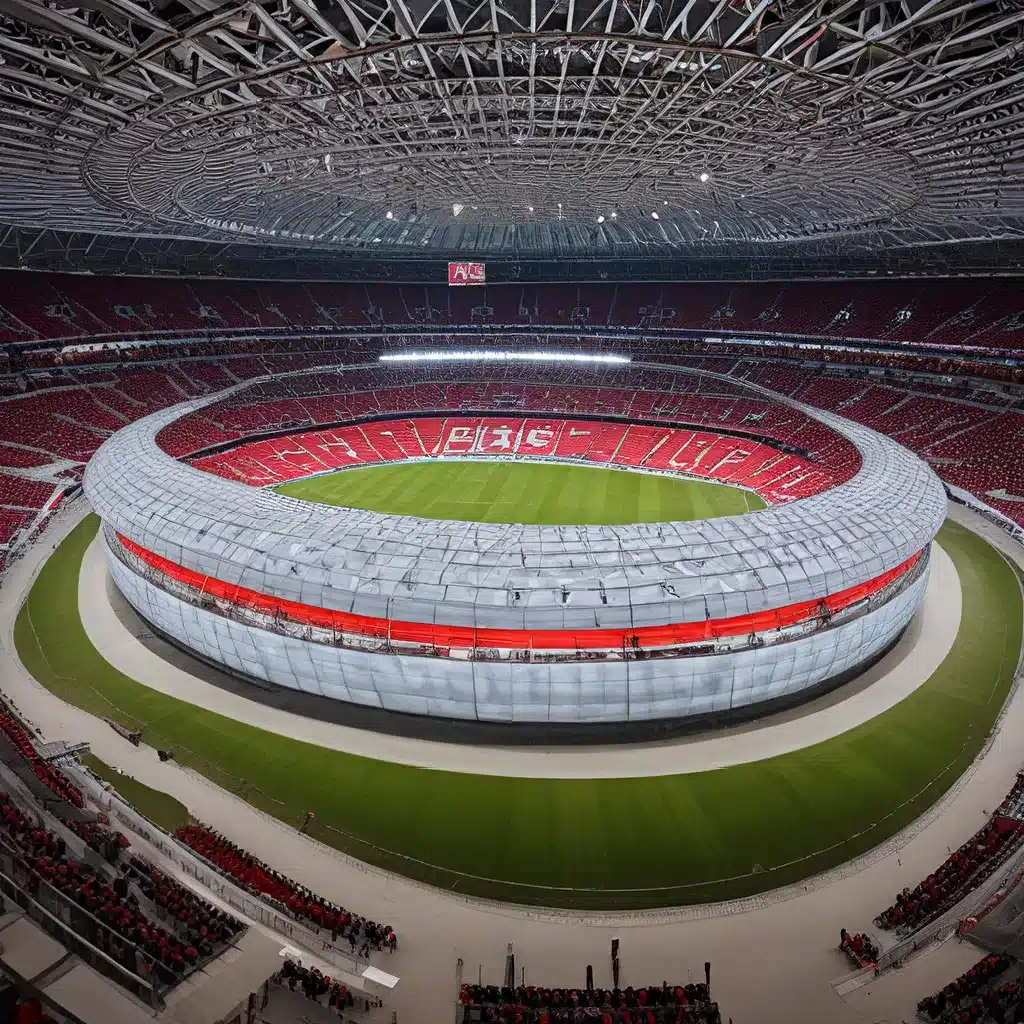
The Allianz Arena in Munich, Germany, is a true architectural marvel that has captivated sports fans and design enthusiasts alike since its opening in 2005. This state-of-the-art stadium, known for its unique and innovative exterior, has become an iconic landmark in the city, serving as the home ground for the powerhouse football clubs Bayern Munich and 1860 Munich.
The Conception and Design
The idea for the Allianz Arena was first conceived in the late 1990s, as Bayern Munich and 1860 Munich sought to replace their aging home grounds, the Olympiastadion and Städtisches Stadion an der Grünwalder Straße, respectively. After a competitive bidding process, the contract for the stadium’s design was awarded to the renowned architectural firm Herzog & de Meuron, known for their innovative and avant-garde approach to building design.
The architects’ vision for the Allianz Arena was to create a structure that would be a true reflection of the modern era of football. They envisioned a stadium that would not only serve as a functional venue for matches but also as a striking visual statement that would capture the imagination of both locals and visitors alike.
The Unique Exterior
The most defining feature of the Allianz Arena is its remarkable exterior, which is composed of inflated ETFE plastic panels. These panels, which are the first of their kind to be used in a stadium design, are capable of independently emitting white, red, or blue lights, allowing the exterior of the arena to be illuminated in the colors of the home team or to display various patterns and designs.
The use of ETFE panels was a particularly innovative choice, as they are not only lightweight and durable but also highly energy-efficient. This design element has earned the Allianz Arena recognition as the first stadium in the world with a fully color-changing exterior, a feature that has become a source of pride for the city of Munich.
The Impressive Interior
While the exterior of the Allianz Arena is undoubtedly its most striking feature, the interior of the stadium is equally impressive. The stadium boasts a state-of-the-art playing surface, with a hybrid grass-artificial turf system that ensures optimal playing conditions throughout the year.
The seating arrangement within the arena is also designed with both comfort and visibility in mind. Spectators are treated to unobstructed views of the pitch, thanks to the stadium’s steep, single-tier design, which places the majority of the seats close to the action. Additionally, the stadium’s retractable roof allows for natural light to flood the interior, creating a bright and airy atmosphere during matches.
Hosting Major Events
Since its inauguration, the Allianz Arena has played host to a number of high-profile events, including several matches during the 2006 FIFA World Cup and the 2012 UEFA European Championship. The stadium’s reputation as a world-class venue has also earned it the right to host the 2022 UEFA Champions League Final, further cementing its status as one of the premier football stadiums in Europe.
Sustainability and Environmental Considerations
In addition to its impressive design and functionality, the Allianz Arena is also recognized for its commitment to sustainability and environmental responsibility. The stadium’s use of ETFE panels not only contributes to its iconic appearance but also helps to reduce energy consumption, as the panels provide effective insulation and natural light filtration.
Furthermore, the stadium’s green spaces and water management systems play a crucial role in promoting environmental sustainability. These features, combined with the stadium’s energy-efficient operations, have earned the Allianz Arena recognition as a leader in sustainable stadium design.
The Allianz Arena’s Impact on Munich
The Allianz Arena has had a significant impact on the city of Munich, both in terms of its cultural and economic significance. The stadium has become a source of pride for the city’s residents, who view it as a symbol of their community’s passion for football and its rich sporting heritage.
Moreover, the Allianz Arena has served as a major economic driver for the region, attracting millions of visitors each year and generating substantial revenue through ticket sales, merchandising, and other related activities. This economic boost has had a ripple effect throughout the local community, supporting businesses and creating new employment opportunities.
Conclusion
The Allianz Arena stands as a testament to the power of innovative design and engineering, showcasing how a stadium can be transformed into a true architectural masterpiece. From its striking exterior to its state-of-the-art interior, the Allianz Arena has become a must-see destination for football enthusiasts and design aficionados alike.
As the home of two of Germany’s most prestigious football clubs, the Allianz Arena continues to attract global attention and cement its status as one of the most iconic stadiums in the world. Its commitment to sustainability and environmental responsibility further underscores the stadium’s role as a leader in the ever-evolving landscape of modern stadium design.
For those interested in exploring the world of stadiums and their architectural significance, a visit to the Allianz Arena is a must. This shimmering jewel of Munich offers a truly unforgettable experience, one that celebrates the intersection of sport, design, and environmental stewardship. To learn more about the stadium journey and other remarkable venues, be sure to visit https://oldstadiumjourney.com/.

